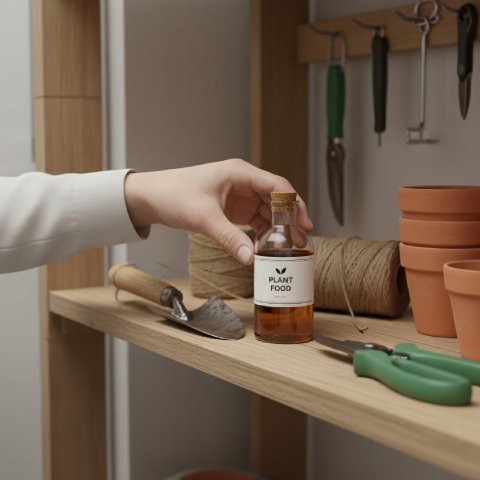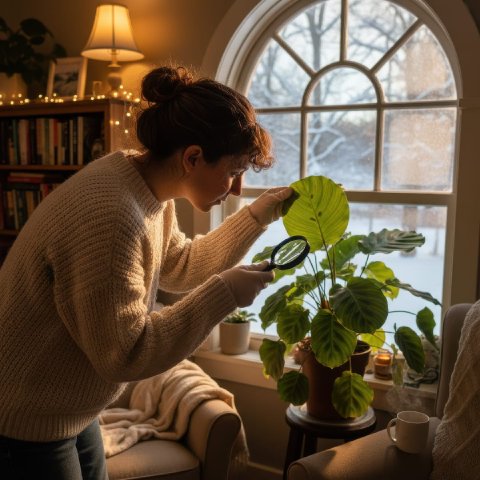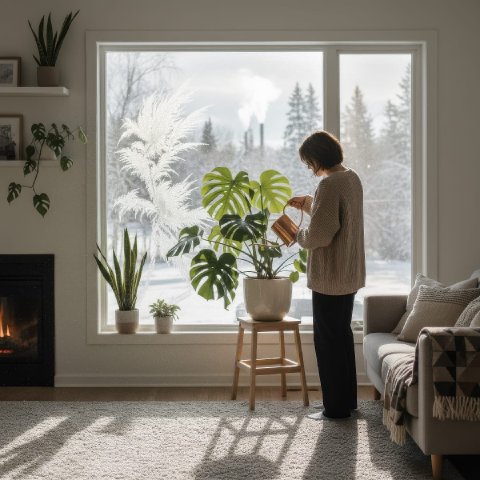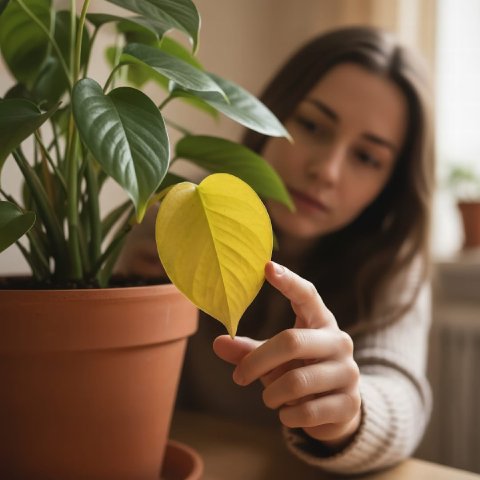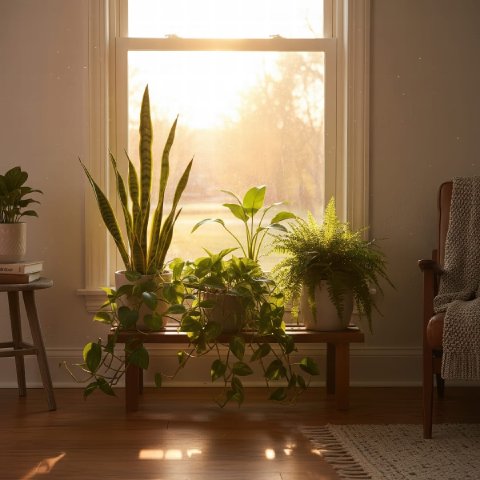🪴 In This Guide 🪴
🍂 Why Autumn Changes Everything
The transition to autumn brings two significant changes for your houseplants: less light and slower growth. Shorter days and a lower sun angle mean less fuel for photosynthesis. In response, most houseplants naturally slow down their growth to conserve energy for the coming winter. This state of rest is often called dormancy.
Because they aren’t actively producing new leaves or flowers, their demand for water and nutrients drops significantly. Sticking to a summer care schedule is one of the quickest ways to cause problems like root rot or nutrient burn.

If you notice plants stretching toward windows, adjust placement with light for houseplants in autumn.
💧 Mastering Autumn Watering
Overwatering is the number one houseplant killer, and autumn is its peak season. Since your plant is using water more slowly, the soil stays damp for longer. Watering on a fixed schedule (e.g., “every Sunday”) is a recipe for disaster.
The Golden Rule: Check the Soil
The only reliable way to know if your plant needs water is to check. The “finger dip test” is simple and effective: stick your finger about two inches into the potting mix. If it feels dry, it’s time to water. If you feel any moisture, wait a few more days and check again. You’ll likely find that plants you watered twice a week in summer may now only need a drink every week or two.
New to watering fundamentals? See Care: Watering.

Water Thoroughly, But Less Often
When you do water, do it well. Pour water over the entire soil surface until it runs freely from the drainage holes at the bottom. This ensures the entire root system gets hydrated. After a good soak, discard any excess water from the saucer. Never let a plant sit in standing water, especially during the colder months.🚫 When to Stop Fertilizing
Think of fertilizer as food for a growing plant. When the plant stops growing for the winter, it no longer needs that extra fuel. Continuing to fertilize a dormant plant is like force-feeding someone who is sleeping-it’s not helpful and can cause problems.
Taper Off, Then Stop
It’s best to wean your plants off fertilizer rather than stopping abruptly. A good practice is to reduce the frequency or strength of your fertilizer in early autumn and aim to stop completely by the end of September. This signals to the plant that it’s time to prepare for its winter rest.
For a full seasonal checklist (move, inspect, prune), see Preparing Houseplants for Winter.
